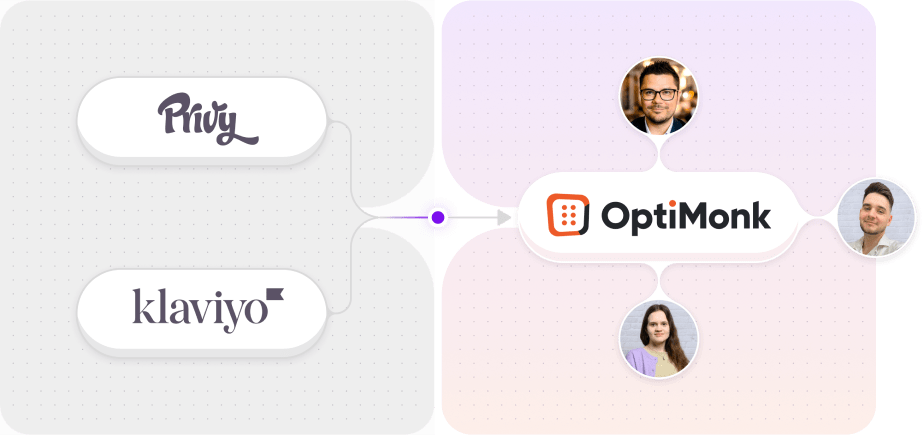- Blog
- Retargeting vs Remarketing: What’s the Difference?
Retargeting vs Remarketing: What’s the Difference?
-
Nikolett Lorincz
- Marketing
- 6 min read
Table of Contents
Ever wonder why an ad for that shirt you almost bought keeps popping up as you browse the web? Or how companies seem to know exactly when to send you a deal on a product you’ve already purchased?
That’s the magic of retargeting and remarketing, two innovative marketing strategies designed to bring people back into the sales funnel.
While they sound similar, they actually work in different ways. Understanding the differences between the two can help you make smarter marketing decisions.
So, let’s dive in!
What is retargeting?
Retargeting is like that friendly reminder you get from a store you visited but didn’t buy anything.
Essentially, it focuses on users who have shown interest in your website or product but left before making a purchase. These are the visitors who browsed, added something to their cart, and then got distracted by the infinite scroll of the internet.
Implementing a retargeting campaign can help convert these potential customers by re-engaging them through various channels.
Retargeting is most commonly used in display ads and paid ad campaigns. If you’ve ever seen a banner ad for a product you were recently looking at, you’ve been targeted.
These targeted ads show up on various websites, reminding visitors about the product or service they almost bought. It’s a top-of-mind marketing strategy, helping brands stay visible while gently nudging potential customers back into the sales cycle.
How does retargeting work?
Retargeting campaigns rely on cookies and pixel-based tracking to follow users around the web. When someone visits your site, a cookie is placed on their browser. This cookie allows you to track them across the internet and serve them ads relevant to the product they showed interest in.
For example, let’s say someone visits a travel website and checks out a few hotels in Spain but doesn’t book. A few days later, they see an ad for a discounted hotel stay in Madrid on another website. This ad isn’t random—it’s a retargeted ad designed to bring that person back and push them closer to booking.
Companies often use retargeting ads to recapture interest by offering limited-time deals, showcasing product reviews, or simply reminding the user that the item is still waiting for them. Think of it as a digital “Hey, don’t forget about us!” nudge.
What is remarketing?
Now, let’s talk about remarketing.
While retargeting ads focus on bringing back site visitors who didn’t convert, remarketing aims to reach out to people who are already part of your customer base or those who have signed up for your email list.
Remarketing often comes in the form of email campaigns designed to nurture existing relationships.
Email remarketing campaigns typically involve personalized offers or messages tailored to the recipient. This could be an exclusive discount, a reminder about items left in the cart, or even a cross-sell or upsell of products they’ve already purchased.
Because the focus is on previous customers or leads, remarketing messages are often more targeted and specific.
How does remarketing work?
Remarketing campaigns are built around segmentation—grouping customers based on their behavior and purchase history. For example, someone who purchased a pair of running shoes might receive an email about matching athletic gear or a special offer for a complementary product.
By using email lists and customer data, businesses can target different segments of their target audiences with messages that feel more personal and relevant.
The idea is to maintain a relationship with these customers and encourage repeat business.
Key differences between remarketing and retargeting strategies
Now that we’ve covered the basics of remarketing and retargeting, let’s take a closer look at how these two strategies differ in terms of audience, approach, and overall goals.
1. Audience
The main difference between retargeting and remarketing is who you’re targeting.
- Retargeting campaigns zero in on people who have visited your website but haven’t made a purchase.
- Remarketing is all about re-engaging customers who have already made a purchase or have shown deeper interest by joining your email list.
2. Campaign strategies
Retargeting is typically a top-of-funnel strategy, meaning it aims to bring in fresh leads who’ve shown interest but haven’t committed.
Remarketing, on the other hand, is more of a middle or bottom-of-funnel strategy. It’s about nurturing leads, building loyalty, and driving repeat business.
3. Message timing and frequency
Retargeting often involves showing ads to users multiple times across different sites to stay on their radar and re-engage customers who have abandoned services or shopping carts. The timing is usually quick and designed to catch people when they’re still thinking about their potential purchase.
Remarketing emails tend to be more spaced out and can be timed based on user behavior, like a week after purchase or when a subscription is due for renewal.
When to use retargeting vs remarketing?
Understanding the unique strengths of retargeting and remarketing is key to choosing the right approach for your marketing goals.
So, when should you use each strategy? Let’s break it down.
When to use retargeting campaigns?
- Driving back visitors who didn’t convert: Retargeting is perfect for capturing the attention of users who left without buying and to re-engage customers who have abandoned their shopping carts.
- Reinforcing brand visibility: It’s also great for staying top-of-mind, especially for people who are still in the decision-making process.
When to use remarketing campaigns?
- Nurturing existing leads: Use remarketing to re-engage customers and keep them excited about your products or services.
- Cross-selling or upselling: Remarketing is ideal for offering complementary products or upgrades to customers who’ve already bought from you.
Use cases and examples
Now that we’ve explored when to use retargeting and remarketing, let’s dive into some use cases to see how these strategies play out in action.
Retargeting use cases
- Cart abandonment: One of the most common uses of retargeting is encouraging users to return and complete their purchase. If someone adds items to their cart but leaves without buying, a well-timed retargeting ad can remind them of what they left behind.
- Dynamic ads: Retargeting can be tailored to display the exact products a user viewed on your site. This is particularly useful for online clothing stores with a large product catalog, as it ensures the ad is highly relevant to the user’s interests.
- Re-engagement: Site retargeting campaigns can also help bring users back to your site to continue getting value from a product or service. For example, online video streaming services can use retargeting ads to remind users of new content or features they might be interested in.
Remarketing use cases
- Email remarketing campaigns: These campaigns are perfect for re-engaging existing customers and driving repeat business. For ecommerce businesses, sending personalized emails with exclusive offers or reminders about items left in the cart can be highly effective.
- Upsells and cross-sells: Remarketing campaigns can be used to upsell and cross-sell to existing customers. For instance, if a customer bought a camera, you could send them an email offering a discount on accessories like lenses or tripods.
- Win-back campaigns: These campaigns aim to bring back revenue from churned or dormant customers. Subscription-based businesses, for example, can use remarketing emails to offer special deals or incentives to customers who haven’t renewed their subscription.
How to set up retargeting campaigns?
When setting up retargeting campaigns, it’s essential to ensure that your efforts align with your overall marketing strategy.
Here are some tips to get you started:
- Define your target audience: Identify the users you want to retarget, such as those who have abandoned their shopping carts or visited specific pages on your website.
- Choose the right platform: Select a retargeting platform that aligns with your marketing goals, such as Google Ads or Facebook Ads. Each platform has its own strengths, so choose the one that best fits your needs.
- Set up tracking pixels: Install tracking pixels on your website to monitor user behavior and display retargeting ads. These pixels will help you gather the data needed to create effective retargeting campaigns.
- Create engaging ads: Design retargeting ads that are visually appealing and relevant to your target audience. Use compelling images and clear calls-to-action to encourage users to return to your site.
- Monitor and optimize: Continuously monitor your retargeting campaigns and optimize them for better performance. Analyze the data to see what’s working and make adjustments as needed to improve your results.
Can you use both retargeting and remarketing?
Absolutely! In fact, combining retargeting and remarketing can be a powerful way to cover all stages of the buyer’s journey.
Here’s an example: you could start with retargeting ads to remind visitors about the product they didn’t buy, then follow up with a remarketing email offering them a special discount.
By coordinating both strategies, you can guide potential customers from awareness to purchase and even repeat business.
Wrapping up
While retargeting and remarketing are often used interchangeably, they serve different purposes within a broader digital marketing framework.
Retargeting works on recapturing the attention of potential customers who left your site without converting, while remarketing focuses on nurturing and re-engaging existing customers. Both strategies are valuable, and when used together, they can strengthen your overall marketing efforts.
The trick is knowing when and how to use each one for maximum impact. Whether you’re bringing back window shoppers or reminding past customers of why they love your brand, these strategies can turn “almost” into a done deal.
Recommended reading: Why Your Remarketing Strategy Isn’t Working Anymore And How You Can Fix It
Migration has never been easier
We made switching a no-brainer with our free, white-glove onboarding service so you can get started in the blink of an eye.

What should you do next?
Thanks for reading till the end. Here are 4 ways we can help you grow your business:
Boost conversions with proven use cases
Explore our Use Case Library, filled with actionable personalization examples and step-by-step guides to unlock your website's full potential. Check out Use Case Library
Create a free OptiMonk account
Create a free OptiMonk account and easily get started with popups and conversion rate optimization. Get OptiMonk free
Get advice from a CRO expert
Schedule a personalized discovery call with one of our experts to explore how OptiMonk can help you grow your business. Book a demo
Join our weekly newsletter
Real CRO insights & marketing tips. No fluff. Straight to your inbox. Subscribe now
Nikolett Lorincz
- Posted in
- Marketing
Partner with us
- © OptiMonk. All rights reserved!
- Terms of Use
- Privacy Policy
- Cookie Policy
Product updates: January Release 2025








